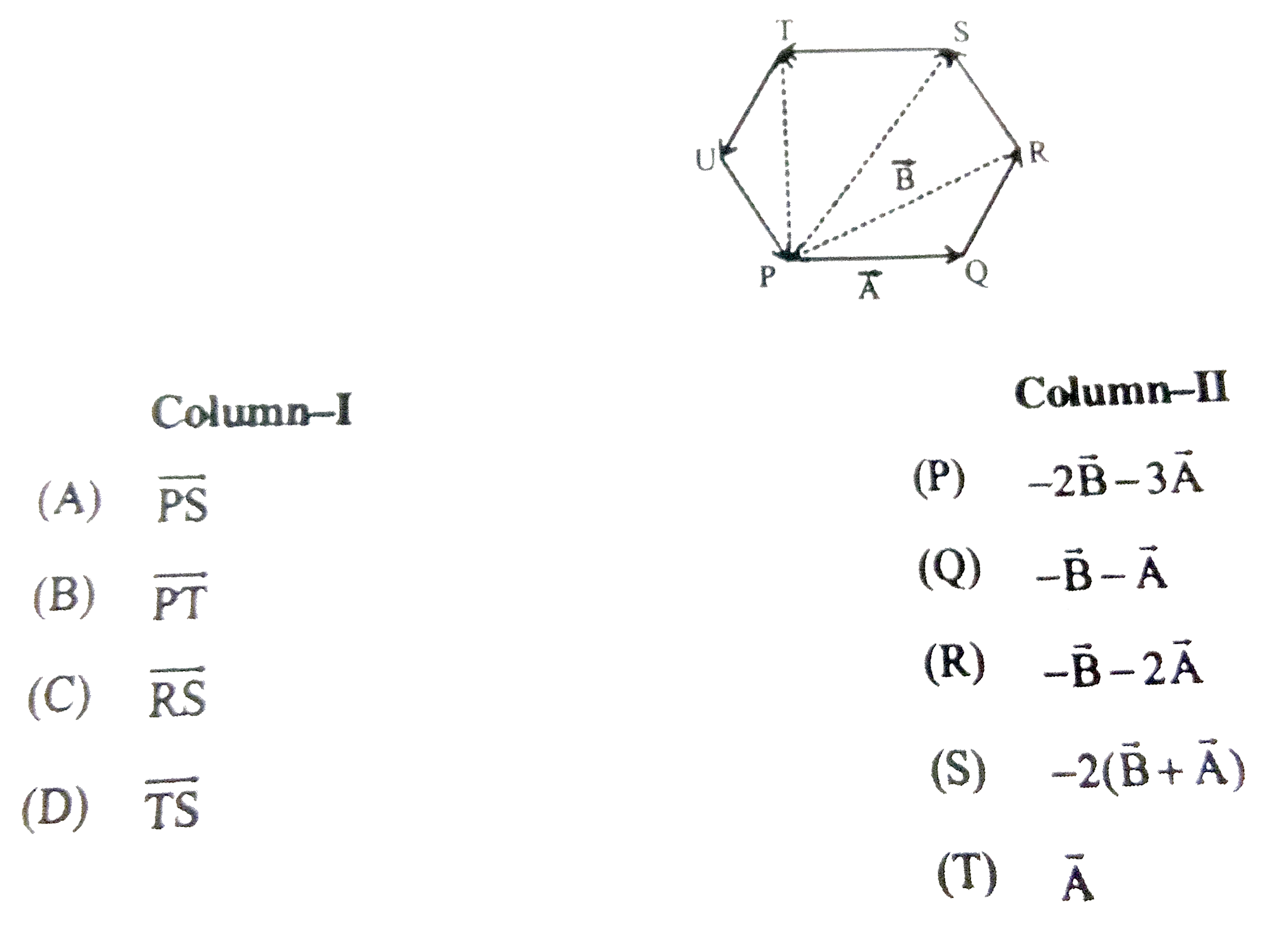In a regular hexagon , →AE =
A
→AC+→AF+→AB
B
→AC+→AF−→AB
C
→AC+→AB−→AF
D
−→AC+→AB−VECAF
Text Solution
The correct Answer is:B
|
Topper's Solved these Questions
- ADDITION AND MULTIPLICATION OF VECTORS BOOK - ML KHANNACHAPTER - ADDITION AND MULTIPLICATION OF VECTORS EXERCISE - Problem Set (1) (TRUE AND FALSE )
3 Videos
- ADDITION AND MULTIPLICATION OF VECTORS BOOK - ML KHANNACHAPTER - ADDITION AND MULTIPLICATION OF VECTORS EXERCISE - Problem Set (1) (FILL IN THE BLANKS )
3 Videos
- AREA OF CURVESBOOK - ML KHANNACHAPTER - AREA OF CURVESEXERCISE - SELF ASSESSEMENT TEST
16 Videos
Similar Questions
Knowledge Check
In a regular hexagon ABCDEF,
→AB+→AC+→AD+→AE+→AF=A4→ADB3→ADC2→ADD0If ABCDEF is a regular hexagon, then ΔACE is
Aa right-angled triangleBan obtuse-angled triangleCan isosceles triangleDan equilateral triangle
In a regular hexagon ABCDEF, −−→AE
View SolutionIf ABCDEF is a regular hexagon with −−→AB=→a and −−→BC=→b, then −−→CE equals
View SolutionThe alternate vertices of a regular hexagon are joined to form another regular hexagon. the ratio of the sides of two hexagons is
View SolutionWhat is the measure of
(i) each exterior angle of a regular hexagon ?
(ii) each interior angle of a regular hexagon ?
View SolutionConstruct a regular hexagon of side 4 cm. Construct a circle circumscribing the hexagon.
View SolutionIf ABCDEF is a regular hexagon, then what is the value (in degrees) of ∠ADB?
View Solution

